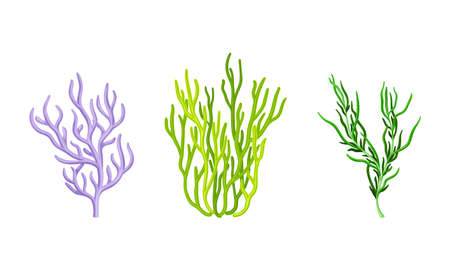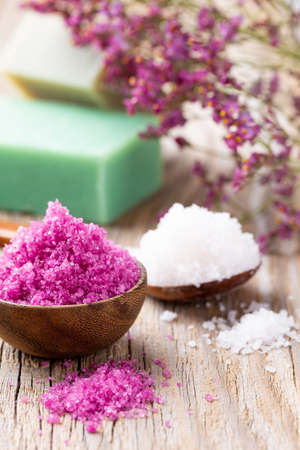Introduction: The Tradition of Detox Baths in the UK
Bathing for health and purification is a tradition deeply rooted in British culture, stretching back centuries and shaped by both local flora and evolving social customs. From Roman baths in Bath to Victorian-era spa towns, the British have long recognised water’s restorative potential—not only for relaxation, but also as a vital component in supporting the body’s detoxification pathways. Historically, bathing rituals in the UK often incorporated native botanicals, such as lavender from Norfolk or Scottish heather, reflecting a keen awareness of the land’s natural bounty. Today, interest in detox baths has seen a revival, blending time-honoured traditions with modern understanding of how herbal infusions and essential oils may support the body’s elimination of toxins through skin absorption and inhalation. By exploring this unique intersection of history, culture, and botanical science, we gain insight into why detox baths remain a cherished practice across Britain.
2. British Botanicals: Key Herbs for Detoxification
Britain’s landscape is rich with botanicals that have been cherished for generations, especially in the context of cleansing and wellbeing rituals. When it comes to detox baths, certain native herbs stand out not just for their aromatic appeal, but also for their traditional roles in promoting a sense of renewal. Among these, lavender, rosemary, and elderflower are particularly notable.
Lavender: The Calming Purifier
Lavender is perhaps one of the most iconic British herbs. Grown in abundance across English gardens and wild meadows alike, its use goes far beyond its fragrant allure. Traditionally, lavender has been valued for its soothing properties—both for the mind and body. In detox baths, lavender aids relaxation and is believed to support gentle cleansing through its mild antiseptic qualities.
Rosemary: Invigorating and Clarifying
Rosemary thrives in many British gardens and has long held a place in herbal traditions for its invigorating aroma and stimulating properties. Historically, it was used as a symbol of remembrance and purification. In bath rituals, rosemary is said to promote circulation and clarity, making it an excellent addition to a detox blend where revitalisation is sought.
Elderflower: Gentle Cleanser from the Hedgerows
The elder tree is woven into British folklore, with elderflowers prized each summer for both culinary and therapeutic uses. Elderflower’s gentle cleansing qualities have made it a favourite in traditional remedies for skin health and overall vitality. Its subtle floral scent adds a delicate note to bath blends while supporting the body’s natural processes.
Comparison of British Botanicals Used in Detox Baths
| Herb | Main Traditional Use | Detox Bath Benefit |
|---|---|---|
| Lavender | Calming, cleansing, relaxation | Soothes skin, promotes calmness |
| Rosemary | Invigoration, purification, memory | Stimulates circulation, clarifies senses |
| Elderflower | Gentle cleansing, skin health | Supports skin vitality, mild detox support |
The Enduring Appeal of British Herbs in Modern Wellness
The unique characteristics of these British botanicals make them especially suited to contemporary wellness routines. Their time-honoured reputations are being rediscovered as more people seek natural ways to unwind and cleanse. By incorporating these herbs into your detox bath practice, you connect with centuries-old traditions while enjoying their benefits in your own home.

3. Essential Oils: Local Distillation and Application
Essential oils have long played a significant role in traditional British remedies, offering both aromatic and therapeutic benefits. When focusing on detox baths, the use of essential oils derived from UK-grown plants not only supports local agriculture but also ensures freshness and potency. Classic British botanicals such as lavender (Lavandula angustifolia), chamomile (Matricaria chamomilla), and peppermint (Mentha × piperita) are frequently distilled into essential oils using steam distillation—a method well-suited for extracting volatile compounds while preserving delicate scents.
Distillation Methods in the UK
The process of steam distillation is most commonly employed by artisan producers across the UK. This technique involves passing steam through plant material, carrying the essential oil vapour into a condenser where it cools and separates from water. Some smaller-scale producers may also utilise cold-press extraction for citrus peels, such as those from locally grown lemons or bergamot. These methods help to retain the integrity of the oils, ensuring their therapeutic qualities remain intact.
Choosing Quality Locally-Sourced Oils
For home detox baths, selecting high-quality, locally distilled essential oils is crucial. Look for products labelled as pure essential oil and ideally certified organic or wildcrafted by reputable British growers. Supporting local distillers also reduces environmental impact associated with transportation and helps sustain native plant populations.
Application in Home Detox Baths
When adding essential oils to a detox bath, always dilute them first—typically 5-10 drops mixed with a tablespoon of carrier oil (such as sweet almond or grapeseed) before dispersing in warm bathwater. This method allows for even distribution and minimises skin sensitivity. Popular combinations include lavender and chamomile for relaxation, or rosemary and peppermint to invigorate tired muscles. Always perform a patch test before full use, especially if you have sensitive skin or allergies.
By understanding local distillation practices and using British-grown botanicals, you can elevate your home detox bath routine in a way that honours both heritage and wellbeing.
4. Formulating the Perfect Detox Bath
Creating an effective detox bath is as much art as it is science, especially when drawing from the rich heritage of British botanicals. To achieve the best results, understanding how to blend herbs and essential oils with Epsom salts—while respecting traditional British pairings and prioritising safety—is essential.
Guidelines for Blending Botanicals and Epsom Salts
Epsom salts (magnesium sulphate) are a staple in British bathing culture, renowned for their muscle-soothing properties. When combined with herbs and essential oils, they create a holistic bathing experience. The following guidelines will help you formulate an optimal blend:
- Start with Quality: Use pharmaceutical-grade Epsom salts and organic, UK-sourced botanicals wherever possible.
- Dosage Matters: For a standard-sized bath, use 2 cups of Epsom salts. Essential oils should be limited to 6–10 drops per bath, always diluted in a carrier oil to prevent skin irritation.
- Layer Aromas Thoughtfully: Pair complementary scents for a balanced effect; classic combinations include lavender and chamomile or rosemary and peppermint.
- Herb Preparation: Tie loose herbs in a muslin bag or use dried blends to minimise clean-up and prevent drain blockages.
Classic British Botanical Pairings
| Botanical | Essential Oil | Traditional Effect | Suggested Combination |
|---|---|---|---|
| Lavender (Lavandula angustifolia) | Lavender oil | Calming, sleep-promoting | Epsom salt + dried lavender + 8 drops lavender oil |
| Chamomile (Matricaria chamomilla) | Roman chamomile oil | Soothe skin & mind | Epsom salt + chamomile flowers + 5 drops chamomile oil + 5 drops lavender oil |
| Rosemary (Rosmarinus officinalis) | Rosemary oil | Mental clarity & muscle relief | Epsom salt + rosemary sprigs + 6 drops rosemary oil + 4 drops peppermint oil |
| Elderflower (Sambucus nigra) | Lemon oil* | Cleansing, refreshing | Epsom salt + elderflowers + 7 drops lemon oil* (*use sparingly due to photosensitivity) |
| Peppermint (Mentha piperita) | Peppermint oil | Invigorating, cooling | Epsom salt + mint leaves + 6 drops peppermint oil + 4 drops eucalyptus oil |
Safety Considerations for Home Blends
- Dilution is Key: Essential oils should always be diluted in a carrier oil such as sweet almond or grapeseed before adding to the bathwater to reduce the risk of skin sensitisation.
- Avoid Overuse: More is not better. Stick to recommended quantities for both herbs and oils.
- Sensitive Skin? Conduct a patch test on your inner arm with your chosen blend before full immersion.
- Citrus Caution: Some citrus oils (like lemon) may cause photosensitivity—avoid sun exposure after bathing.
- Pregnancy & Health Conditions: Consult with a healthcare professional before using certain essential oils if pregnant or managing chronic health issues.
Troubleshooting Your Bath Blend
- If the scent is too strong: halve the amount of essential oil next time.
- If botanicals float excessively: use a muslin bag or reusable tea infuser.
- If skin feels irritated: rinse thoroughly and discontinue use of that ingredient in future blends.
The Engineering Note:
Your perfect detox bath is the result of careful measurement, thoughtful selection of ingredients, and respect for traditional pairings. Document your recipes and adjustments—over time, youll refine what works best for you while honouring Britains botanical heritage.
5. Modern British Experiences: From the Countryside to the City
In contemporary Britain, the tradition of using herbs and essential oils in detox baths has gracefully adapted to suit both rural and urban lifestyles. While countryside dwellers often have direct access to fresh botanicals—such as lavender, rosemary, and chamomile growing in cottage gardens or hedgerows—city residents are increasingly turning to curated blends sourced from local markets, apothecaries, or even online retailers. This convergence of tradition and modern convenience reflects a broader trend towards personal wellness across the nation.
Embracing Rural Wisdom
In rural areas, many Britons continue to draw on ancestral knowledge when selecting ingredients for their detox baths. For example, it is not uncommon for individuals in villages to gather wild nettles or mint after a long day’s work, infusing their bathwater with these locally grown herbs for a naturally soothing experience. Such practices not only connect people with the land but also reinforce a sense of heritage and sustainability.
Urban Wellness Culture
Meanwhile, urbanites have reimagined these age-old rituals within the fast pace of city life. Essential oil blends featuring classic British botanicals like elderflower, heather, or rose are popular choices in metropolitan spas and wellness boutiques. Many Londoners and Mancunians incorporate evening bath rituals into their self-care routines, seeking relaxation and mental clarity amidst city stress. The convenience of ready-made herbal sachets and essential oil drops makes it easy for even the busiest professionals to benefit from these time-honoured remedies.
The Influence of Social Trends
The resurgence in popularity of herbal baths is also fuelled by social media trends and a renewed interest in natural living. British influencers frequently share tips on creating bespoke bath blends using native plants, sparking curiosity among younger generations. This collective enthusiasm has led to community workshops, pop-up markets, and collaborations between herbalists and skincare brands—each celebrating the unique properties of British botanicals.
A Harmonious Blend
Ultimately, whether in a remote Cornish village or a bustling London flat, the use of herbs and essential oils in detox baths continues to evolve. Modern Britons value both authenticity and accessibility, seamlessly integrating traditional knowledge with contemporary wellbeing practices. The result is a vibrant culture that honours botanical heritage while embracing new ways to support health and relaxation through the humble yet powerful ritual of bathing.
6. Precautions and Considerations: What Every Brit Should Know
While the allure of a detox bath infused with British botanicals is undeniable, it’s essential to approach their use with informed caution. Not all herbs and essential oils are suitable for everyone, and understanding potential risks and evidence-based recommendations ensures your experience remains both safe and enjoyable.
Potential Risks and Allergies
Many classic British botanicals, such as lavender, chamomile, or rosemary, are generally well-tolerated; however, even these can trigger allergic reactions in sensitive individuals. Symptoms can range from mild skin irritation to more severe responses like hives or respiratory issues. It’s crucial to perform a patch test: dilute a drop of essential oil in a carrier oil, apply it to a small area of skin, and wait 24 hours before full use. If redness, itching, or discomfort occurs, avoid using that botanical in your bath.
Safe Use Guidelines for UK Households
Always dilute essential oils before adding them to bathwater—neat application can cause burns or irritation. For an average bath, no more than 5-10 drops of essential oil (blended first with a carrier like sweet almond or grapeseed oil) is recommended. Remember, children, pregnant women, and those with existing medical conditions should consult a healthcare professional before trying new botanicals or oils in their baths.
Evidence-Based Recommendations
The National Health Service (NHS) and other UK health authorities advise caution regarding claims about “detoxification” through baths. While soaking can promote relaxation and may help soothe minor aches due to warmth and hydration, scientific evidence supporting the elimination of toxins via herbal baths is limited. Instead, focus on the proven benefits: stress reduction, improved mood, and gentle skin care.
Responsible Sourcing and Sustainability
Opt for locally grown or ethically sourced herbs and essential oils whenever possible. This not only supports British growers but also ensures higher quality and reduces the risk of adulteration—a concern particularly relevant to imported oils.
When to Seek Medical Advice
If you have ongoing skin conditions (such as eczema), respiratory ailments (like asthma), or allergies to pollen or plants common in British gardens, seek advice from your GP before incorporating new botanicals into your self-care routine. If you experience dizziness, difficulty breathing, or persistent skin irritation after a detox bath, discontinue use immediately and consult a healthcare professional.
By staying mindful of these precautions and making choices grounded in evidence rather than trends alone, you can enjoy the restorative tradition of British botanical baths safely and with confidence.
7. Conclusion: Embracing British Nature for Holistic Cleansing
In summary, British botanicals hold a unique and invaluable role in personal care, particularly within the tradition of detox baths. By choosing local herbs and essential oils—such as soothing lavender from Norfolk, revitalising Scottish heather, or cleansing Cornish seaweed—we not only honour centuries-old herbal wisdom but also support sustainable and eco-friendly self-care practices. These ingredients offer more than physical benefits; they connect us to the landscapes and heritage that define Britain’s natural beauty. We encourage you to rediscover these time-honoured remedies by incorporating them into your bath rituals. Whether you are seeking relaxation, rejuvenation, or gentle cleansing, embracing the rich variety of homegrown botanicals allows you to create a truly holistic and mindful bathing experience. Let the legacy of British herbal traditions inspire you to nurture both body and spirit, drawing on the healing power of nature found right at your doorstep.


